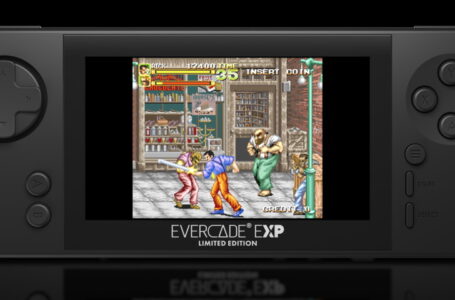Dealing with a troublesome case of wind in El Viento
Besides Valis and Valis III, one of the games I was most looking forward to giving a try on the new Renovation Collection 1 cartridge for the Evercade retro gaming platform was Wolfteam’s El Viento. This was a game that, like Valis, I had a passing familiarity with, but had never actually played, and both its premise and aesthetic very much appealed to me. So with that in mind, we’re taking a look at it today.
In El Viento, you play the role of Annet, a sorceress who is a distant relation to the elder wind god Hastur, of H.P. Lovecraft’s Cthulhu mythos fame. It’s the late 1920s — as it almost always is in Lovecraft-inspired tales — and cult leader Henry, sorceress Restiana and gangster Vincente DeMarcoto are conspiring to awaken Hastur from his slumber for reasons that aren’t entirely clear. Annet is having absolutely none of this, of course, and so it’s up to you to guide her on her quest to save the day.
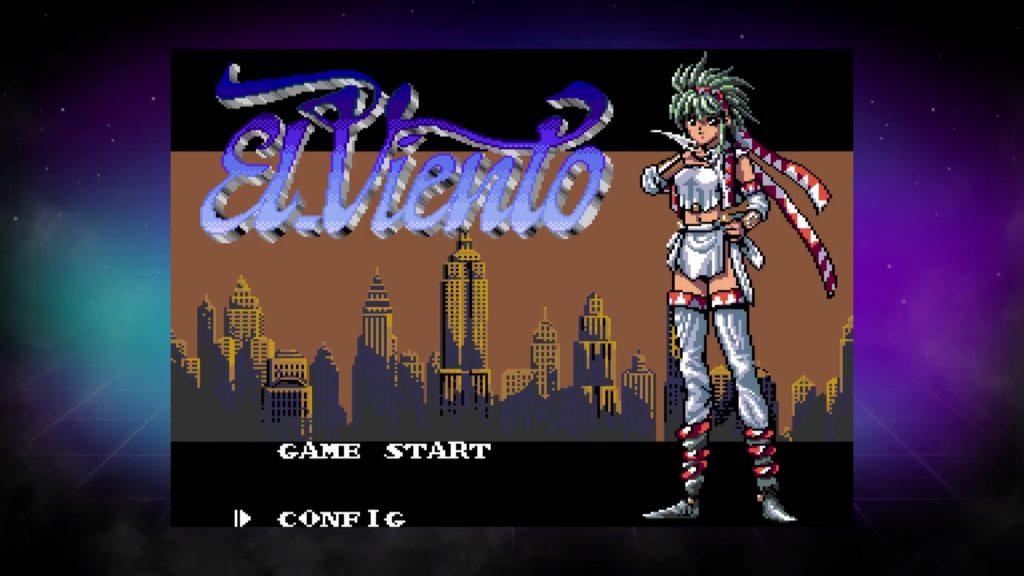
El Viento first released for Mega Drive in 1991, and it’s one third of a trilogy of games that has somehow become known as the Earnest Evans series, despite the fact that Annet is the lead character in two of them. It’s the first of the trilogy and, despite superficially resembling the Valis series, has a markedly different feel to it — mostly due to its speed.
As you might expect from a game whose title means “the wind” in Spanish, El Viento moves along at a significantly brisker pace than the Valis games. While Valis and its sequels adopted a deliberate, almost ponderous pace, giving those games a somewhat Castlevania-esque feel, El Viento opts for a distinctly arcadey feel; Annet zips around the screen and throws out boomerangs as quickly as you can hammer the fire button, and pretty much from the outset you’ll be bombarded with enemies looking to make your life miserable.
One of the strongest aspects of El Viento is its variety, even if this causes the narrative angle of the game to feel a bit disjointed at times. It’s rare you’ll be facing the same types of enemies two stages in a row.
For example, in the first stage, you’ll be battling gangsters in the city streets of New York, while in the next, you’ll be fending off strange monsters while riding the rollercoasters (yes, really) scattered around Mount Rushmore… then you’ll head back to New York, drop into the sewers, head through a wall and somehow end up in what appears to be the Stone Age. Never a dull moment.
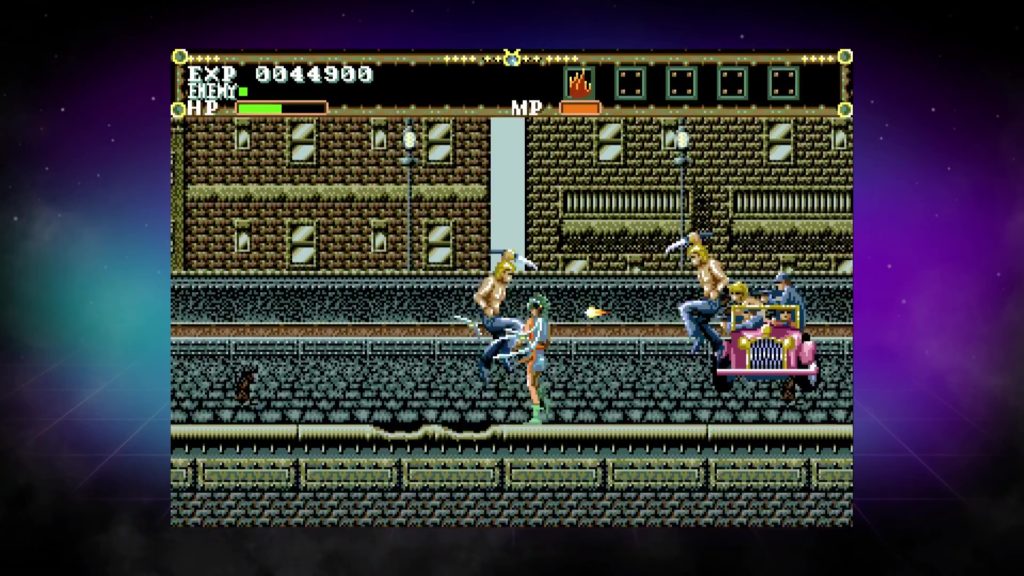
Annet’s agility and the overall pace of the action makes El Viento a joy to play, even if some aspects of its gameplay — notably some of the bosses — are a little clumsily designed. The first boss, for example, takes the form of a tank that continually shoots at Annet, and is seemingly impossible to destroy… that is, unless you crouch in just the right position and just hammer the fire button until it explodes. I can’t help feeling that wasn’t quite the designers’ original intention, but it’s what works most reliably.
The action is, like a number of other Wolfteam games, accompanied by a stirring soundtrack from Motoi Sakuraba, best known today for his work on the Tales series. And, like many other Renovation titles from the period, there’s a strong effort to provide a sense of unfolding narrative as the game progresses — even if that narrative doesn’t make a ton of sense at times, as we’ve previously addressed.
It doesn’t matter too much, though, since the real attraction of El Viento’s cutscenes is the gloriously beautiful anime-style pixel art, and even if you didn’t have a clue what anyone was saying these would still be an absolute delight to gaze upon. You can definitely tell that the ambition to make a “cinematic” sort of game was there, even if the execution hadn’t quite been mastered just yet; as such, while El Viento certainly isn’t ever going to go down as any kind of masterpiece of interactive storytelling, it’s definitely noteworthy to look upon and see how far we’ve developed from relatively humble beginnings.
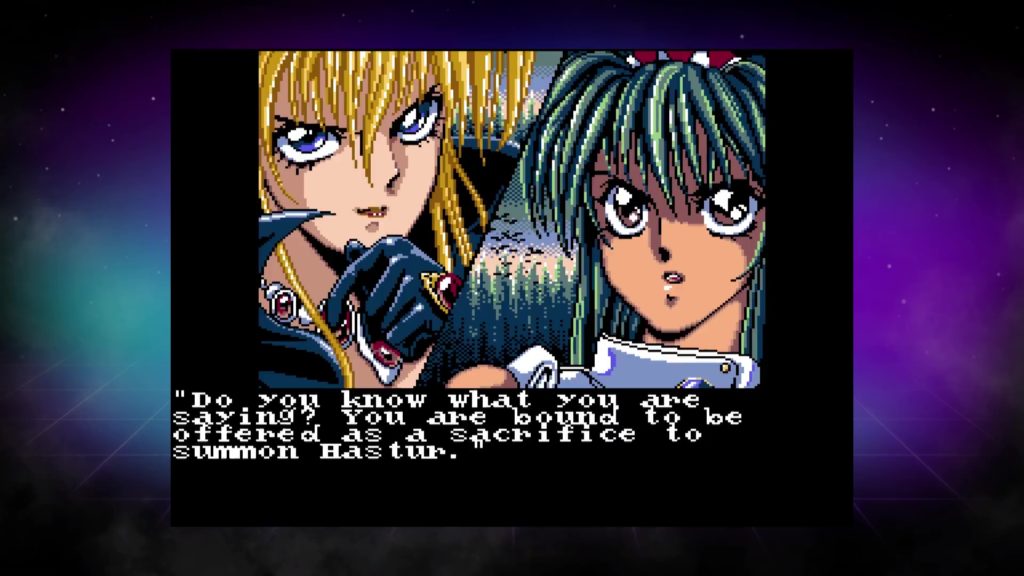
The really important thing for a 16-bit game like this, though, is the gameplay, and El Viento certainly delivers on that front. It puts up a seriously stiff challenge — it’s harder even than Valis III’s most annoying bits — but is also designed considerately enough that you feel like you can make a bit of progress each time you play. While there are some parts of levels with questionable design — a really irritating “rotating platforms” bit partway through the Mount Rushmore level springs to mind — for the most part, no death in El Viento feels “cheap”.
The use of your score as “experience points” allows your life bar to gradually extend as you progress through the game — and you carry across your score and life bar extensions when you continue, meaning that while the game’s structure makes brute-force credit-feeding impossible, repeatedly continuing can potentially make things marginally easier for you.
You do only have limited credits, though, so at some point you’re going to have to master the more difficult sections. This approach to continuing, used in many 16-bit titles, strikes a good balance between allowing inexperienced players to catch a glimpse of later stages and actually demanding that they improve their skills; while some may prefer the ability to continue in an unlimited manner (and, indeed, using the Evercade’s save states you can effectively have that functionality) the limited credits on offer in El Viento’s base form make for a well-balanced challenge when played as originally intended.
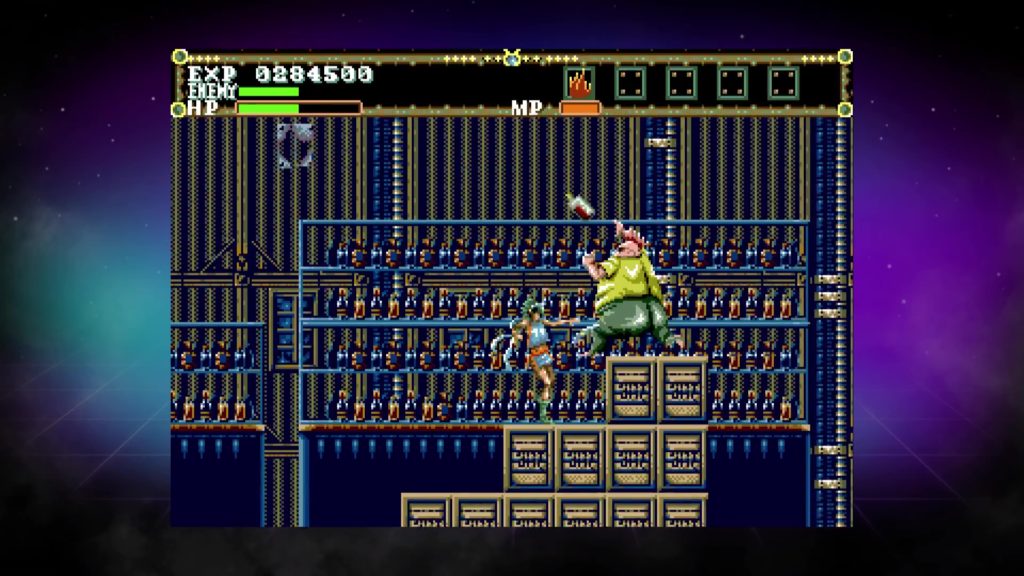
El Viento’s absolutely a highlight of the Renovation Collection 1 cartridge for Evercade, then. While its difficulty may initially be offputting to some, it’s exactly the same situation as the other challenging games in this compilation: put in a bit of time to get to know it and learn the levels and you’ll find yourself making consistent progress. That’s an immensely satisfying feeling — and, to me, a hallmark of 16-bit games’ enduring appeal.
Evercade’s Renovation Collection 1 cartridge is available to order now. Screenshots from the Evercade version running on Evercade VS.
Join The Discussion
Rice Digital Discord
Rice Digital Twitter
Rice Digital Facebook
Or write us a letter for the Rice Digital Friday Letters Page by clicking here!
Disclosure: Some links in this article may be affiliate links, which means we may earn a small commission if you make a purchase after clicking on them. This is at no additional cost to you and helps support Rice Digital!
- Letter from the Editor: passing the torch - June 30, 2023
- Super Woden GP 2 is looking promising - June 30, 2023
- Inti Creates is making a 32 bit-style Love Live action platformer - June 26, 2023







